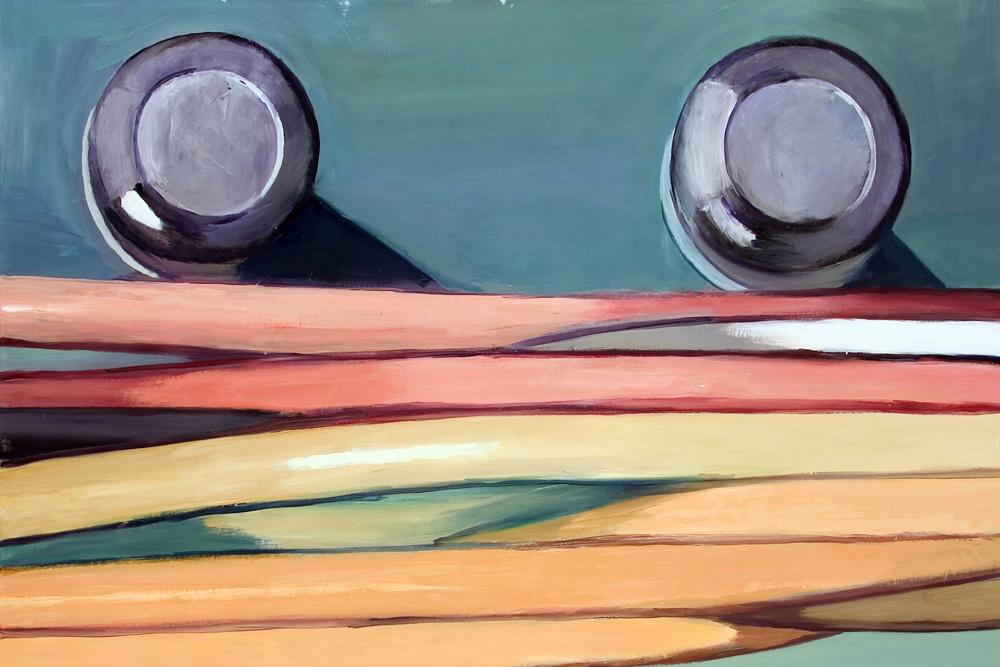
Doublethink — a notion, introduced by George Orwell in his novel-antiutopia “1984”. It denotes the state of individual mind, when one’s reasoning is based on the mutually incompatible ideas and believes. In a narrow sense doublethink is nothing else but hypocrisy. In the present, broad and morally neutral sense it is a mosaic mentality, which creates weird “multilingualism” and the corresponding way of reaction.
A group exhibition of four young artists at Stella Art Foundation at Mytnaya ulitsa, titled “Doublethink” is dedicated to a spontaneously developing new art language, to be more exact — to languages, as today art is trying to speak two or even several languages at a time. Its authors are yesterday’s children, brought up in multilayer cultural surroundings, made of contradictory background of the recent Russian history: from Communist totalitarianism with its unitary ideology to new-capitalist pluralism. They seem even to think about completely different things simultaneously as they use images, which resemble many other things at the same time.
Alexandra Galkina creates abstract graphics, the stylistics of which is similar to the one of Soviet suprematism. Moreover, her works contain much simplified shapes of real objects: patterns of ladies’ wear, details of factory machines, microcircuits, building constructions and elements of household furniture. Diana Machulina makes ironically absurd machines and creates coalescent art metaphors. Ksenia Gnilitskaya displays abstractedly beautiful photographs, which, in fact, represent shots of twisted car wreckage. Alexander Pogorzhelsky draws pictures depicting pieces of meat and hardware fragments, which resemble portraits of some fantastic creatures.
Such works do not resemble a mechanical collage, the elements of which are connected according to the rules of traditional composition. They are not even like postmodernist palimpsest, which used to be in great fashion 10 years ago or so: the former art break-through has already become trivial and part of the mass media, which determines our reactions and mode of life today. A new generation, brought up on media images, speaking the language of TV commercials and net chats, has easily created a new natural language. It appears to be childishly simple and naïve and resembles much in the previous generation art. However, its openness is deceptive, and the threads of sense are stretched exactly where the boarders between irreconcilable art ideologies used to be. This is the reason why it is hard to suspect young artists of the desire to create a regular aesthetic programme. For the time being their “doublethinking” results in original faceted optics. A fresh look is scanning insatiably a new wonderful world, yet the hand has not traced its final map.
Vladimir Levashov
The Foundation has published an illustrated catalogue of the exhibition with an essay by Vladimir Levashov and interviews with artists taken by Vladimir Levashov.